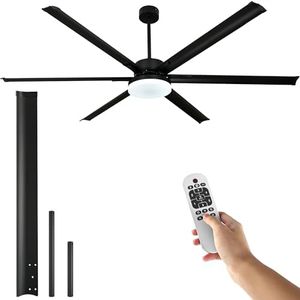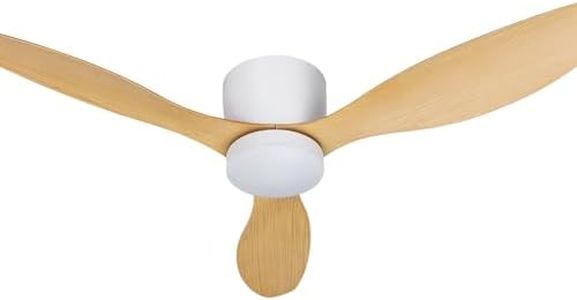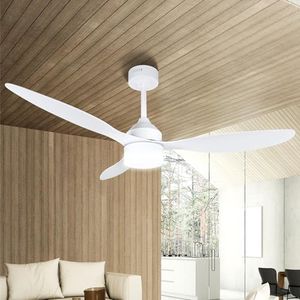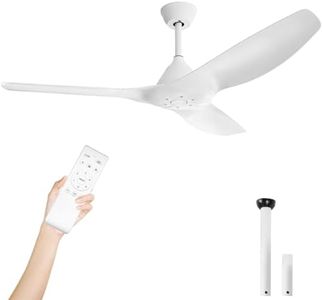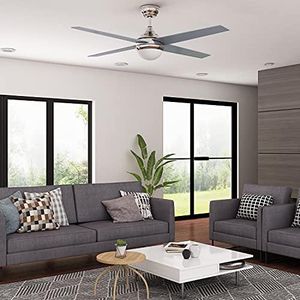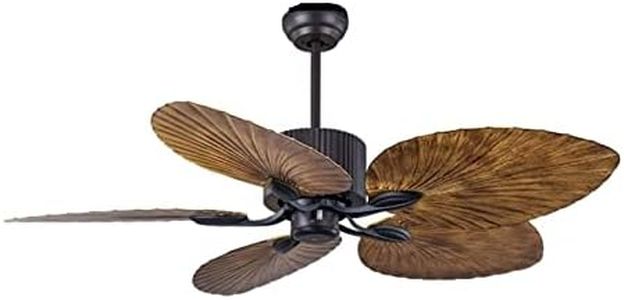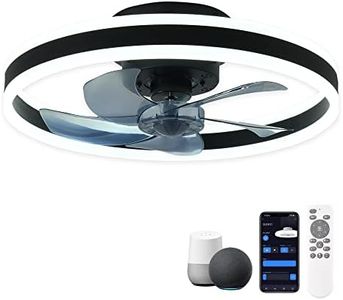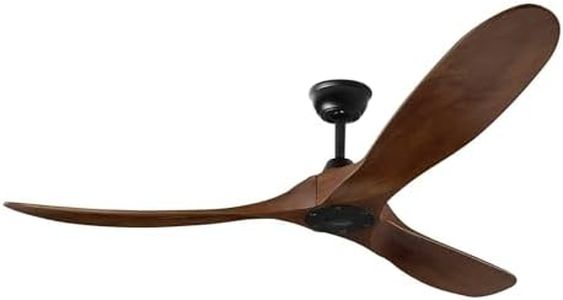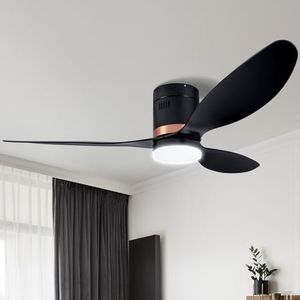We Use CookiesWe use cookies to enhance the security, performance,
functionality and for analytical and promotional activities. By continuing to browse this site you
are agreeing to our privacy policy
10 Best High Airflow Ceiling Fans
From leading brands and best sellers available on the web.Buying Guide for the Best High Airflow Ceiling Fans
Selecting the right high-airflow ceiling fan can make a big difference in your comfort, especially if you need effective air circulation in bigger rooms or warmer climates. The process starts with understanding your room’s size, your comfort needs, and the style you’re aiming for. Focus on the main features that impact airflow performance and efficiency to find the best match. Always consider where the fan will be installed, how often it’ll be used, and how quiet or energy-efficient you want it to be. With some key knowledge about the main specs, you can confidently choose a ceiling fan that effectively moves air and suits your space perfectly.CFM (Cubic Feet per Minute)CFM stands for cubic feet per minute and measures how much air the fan moves every minute. It’s one of the most important specs for airflow. Higher CFM means more air movement, making the fan more effective in large or stuffy rooms. Small rooms usually do well with 2000–3000 CFM, medium rooms with 3000–4500 CFM, and large rooms or open spaces with 4500 CFM or above. To pick the right CFM, first measure your room; bigger or high-ceiling areas will need higher CFM. Choose based on whether you need gentle circulation (go lower) or strong cooling (go higher).
Blade Span (Size/Width)Blade span refers to the diameter of the circle the fan blades create when spinning. It determines how much area the fan can cover. Generally, blade spans under 42 inches are best for small rooms like bedrooms, 42–52 inches for medium rooms like living rooms, and fans above 52 inches for large or open areas. If your goal is to maximise airflow in a large space, opt for a wider span. For smaller rooms, a shorter span avoids overwhelming the space and ensures efficient airflow.
Blade PitchBlade pitch is the angle of the fan blades, often measured in degrees. It affects how much air the blades push with each spin. A higher blade pitch, around 12–15 degrees or more, typically means better airflow. Low-pitch fans (around 10 degrees) move less air, which might be enough for gentle circulation. For high-airflow needs, look for a higher blade pitch to ensure the fan is powerful enough for your intended space.
Number and Shape of BladesThe number and shape of the blades influence air movement and efficiency. Fans with more blades can be quieter and look sleeker, but sometimes fewer blades allow for faster spinning and higher airflow. Standard fans have 3 to 5 blades. If quietness and aesthetics are most important, more blades might be preferable. If maximum airflow takes priority, sometimes fans with fewer, well-shaped blades offer stronger performance. Always balance style with function based on your needs.
Motor Type and EfficiencyThe fan’s motor powers the blades, and its quality affects both airflow and noise. Modern fans often use DC motors, which are quieter and more energy-efficient, while traditional AC motors are common but can be slightly louder. For frequent long-term use, a high-quality, efficient motor will be quieter, last longer, and cost less to run. Choose a fan with a reputable, efficient motor if reliability and low noise matter to you.
Mounting Type and Ceiling Height CompatibilityCeiling fans can be flush-mounted (hugger fans), mounted with a short downrod, or with a long downrod for high ceilings. The mounting method affects how well the fan circulates air and whether it fits your room safely. For low ceilings, choose flush-mounted styles. For standard ceilings, a short downrod is often best. For very high or vaulted ceilings, use a longer downrod to bring the fan closer to the living area. Ensure you choose the correct type so your fan is both effective and safe.
Control OptionsFans can be controlled by pull chains, wall switches, remote controls, or smart devices. Advanced models allow for speed and direction adjustment at a distance, which is useful for hard-to-reach installations or convenience. For maximum comfort, pick a control style that fits your lifestyle. Remotes and wall controls are great for daily use or for fans in spaces with high ceilings.
